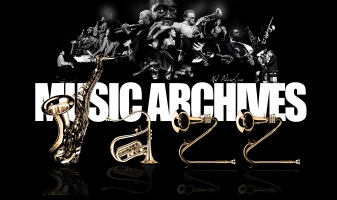
 |
‘And Did Those Feet – Six British Jazz Composers’ |
Post Reply 
|
| Author | |
snobb 
Forum Admin Group 

Site Admin Joined: 22 Dec 2010 Location: Vilnius Status: Offline Points: 28472 |
 Post Options Post Options
 Thanks(0) Thanks(0)
 Quote Quote  Reply Reply
 Topic: ‘And Did Those Feet – Six British Jazz Composers’ Topic: ‘And Did Those Feet – Six British Jazz Composers’Posted: 15 Oct 2023 at 3:17am |
‘And Did Those Feet – Six British Jazz Composers’ (Michael Garrick, Mike Gibbs, Barry Guy, John Mayer, Keith Tippett and Mike Westbrook)Duncan Heining – And Did Those Feet – Six British Jazz Composers
Here’s a lovingly made invitation to dig into the work of half a dozen important contributors to new music in the UK. Duncan Heining, a notable jazz biographer, offers a skillful summary and appraisal of six key figures not treated this way before: Michael Garrick, Mike Gibbs, Barry Guy, John Mayer, Keith Tippett and Mike Westbrook. All were first active in the 1960s, and had long careers thereafter (Guy, Westbrook and Gibbs, of course, remain active.) And all are prolific composers and arrangers, the emphasis the title indicates. As it happens in jazz, they were also important players, improvisers and organisers. And Heining emphasises that, for most, writing music for small groups has been as important as the large ensemble projects that can dominate retrospective views. He is less concerned with instrumental brilliance, except when his subjects are improvising in performance of their own work, though all had that as well. They are an extraordinarily talented bunch. Garrick led groups large and small from the keyboard, wrote for jazz and poetry collaborations and composed a series of jazz chorales that Heining urges us to agree are major achievements. Gibbs, who began fashioning his unique blends of jazz, rock and Messiaen in London after early life in Zimbabwe (then Rhodesia) and study in the USA, became an arranger in demand globally alongside his own less frequent large-scale recordings. Ever experimental Barry Guy has extended the vocabulary of the double bass as a player while performing with distinction in baroque, jazz and free improvisation. Mayer, born and raised in India, had a successful classical violin career before launching his pioneering Indo-Jazz fusions with Joe Harriott in the 1960s, and developing that work in the 1990s. Tippett, an inspiring composer, performer and educator, became identified for some with free improvisation – in small groups, as a solo pianist or in duo with his partner Julie – but wrote notable scores throughout his career. And Westbrook, at 87, remains active on all fronts. Heining is a meticulous researcher, summarises context neatly, and describes the music well with a minimum of technical detail. His historian’s instincts serve him well, and he makes good use of personal acquaintance with his subjects, although the chapter on Mayer relies almost entirely on others’ testimony. Occasional academicisms creep in when he is filling in background, but the writing is more often that of an enthusiast writing for other enthusiasts. That does not render him uncritical: he offers plenty of well-reasoned judgments about which works came off better, or not at all. And those judgments are informed by a vast knowledge of jazz and other music, classical and contemporary. So his book will be a treasure trove of listening for nearly everyone. Those with memories that reach back to the earlier work of some of these artists may have overlooked later work, or neglected others more comprehensively. Your reviewer still listens often to Tippett, Westbrook and Gibbs, for example. But I have rarely had an ear for Garrick, who began somewhat earlier, spent far too little time exploring Barry Guy’s recordings, and heard little of John Mayer’s work. I came away with a much enriched view of all three, and much music to catch up on. The interested listener who knows little about any of these composers will have an even larger list of treasures to unearth, a task a good deal easier now than when hearing this stuff relied on finding second-hand copies of deleted vinyl. For the uninitiated, the hardback also comes with 2CDs of music, giving a taste of each of the six. All the tracks are from BBC radio sessions in 1971 or 1972, except for a vivid version of the 25-minute mini suite Santarcangelo from Westbrook’s monumental big band work The Cortege from 1980. None of these performances have been available before except to folks who were quick with the record button when they first aired. Most readers of this book will want to spend time searching out some of the enticing music Heining describes, but the tracks supplied are a marvellous start. They alone are probably worth the surprisingly reasonable 20 quid Jazz in Britain are asking for the whole package. How do they do it? The six chapters also add up to a rich picture of UK jazz in the 1960s and 1970s. Talk of a “golden age” (which Heining seems to endorse) notwithstanding, the jazz scene was much, much smaller than today. Pretty well everybody knew everybody, and like-minded, versatile musicians worked together in many different contexts. Big bands, often convened for just one or a few dates, took this to another level, and the same names recur often in the various ensembles the six assembled, especially in the earlier years. It is pleasing to note that the redoubtable Henry Lowther, still performing regularly on trumpet, takes the prize for appearing on recordings by every one of them. More remarkable is that this small island managed to nurture six such outstanding composers and organisers, who created such a large body of work that lasts. There are other figures of similar stature from this period. Heining has already written about Graham Collier, for example, and there are books out or coming soon on Neil Ardley, Ian Carr and Kenny Wheeler. But an attentive reading of the relevant chapter persuades that every one of these six warrants inclusion here. Chapter placement in alphabetical order means Mike Westbrook comes last. He is perhaps the creator Heining writes about most enthusiastically and, for my money, the one who most obviously deserves a book-length study. That would be a formidable undertaking: Heining’s chapter starts by noting that a list of Westbrook’s recordings, commissions and performances is ten pages long. And a full treatment call for a music critic and cultural historian par excellence to do justice to Mike and Kate Westbrook’s involvement with theatre and literature as well as jazz. I hope that’ll happen. For now, it’s a reminder of what a large undertaking this book was, dealing with six people all nearly as productive for nearly as long. And a reader – me, for instance – who has lately read the new 750 page biography of Sonny Rollins may come away very grateful that Heining has realised his own aims so successfully in a much shorter volume. Anyone curious about some of the most exciting music-making on these islands in the last half century will want to read this fine book. Jon Turney writes about jazz, and other things, from Bristol. Twitter jonwturney (*) And did Those Feet includes two CDs of previously unreleased music, not available separately. from https://londonjazznews.com Edited by snobb - 15 Oct 2023 at 3:18am |
|
 |
|
Post Reply 
|
|
|
Tweet
|
| Forum Jump | Forum Permissions  You cannot post new topics in this forum You cannot reply to topics in this forum You cannot delete your posts in this forum You cannot edit your posts in this forum You cannot create polls in this forum You cannot vote in polls in this forum |